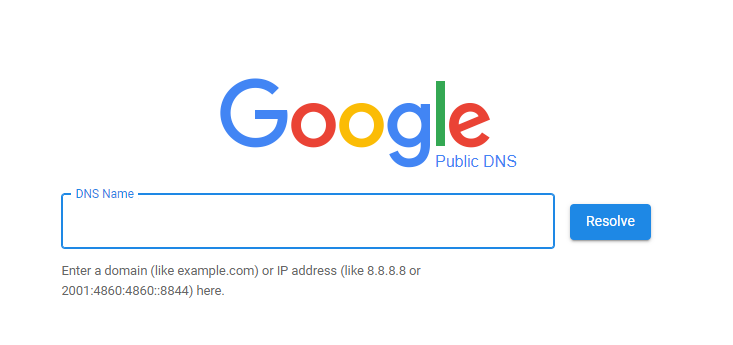When we use the internet, something called DNS, or “Domain Name System,” works in the background. It acts like a phonebook, turning website names into numbers (IP addresses) that computers can understand. Without DNS, we’d have to remember long numbers for each website. There are many DNS servers, but Google DNS servers are one of the most popular.
In this article, we’ll explain what Google DNS server is, how it works, and why people use it.
What Is DNS and Why Does It Matter?
Before diving into the specifics of Google’s DNS servers, let’s first understand what DNS is and why it’s important. DNS stands for Domain Name System, and it is essentially the phonebook of the internet.
When you type a web address like “www.google.com” into your browser, DNS servers translate this human-readable address into an IP address, which is the numerical address that computers use to find the website.
For example, when you type “google.com,” your DNS server finds the IP address for Google’s website (something like 172.217.0.46), so your browser can connect to it. Without DNS servers, you would need to memorize the IP addresses for every website you want to visit, which would be very inconvenient. This is why DNS servers are so important — they make the internet easy to use.
However, not all DNS servers are created equal. Some are faster and more reliable than others. That’s where Google DNS comes in.
What Are Google DNS Servers?
Google DNS servers are public DNS servers that anyone can use. Google launched its DNS service in 2009 intending to make the internet faster and more secure. By using Google’s DNS servers, users can potentially improve their internet speed, reliability, and security. Google DNS is also known for being simple to set up and use.

While the most well-known Google DNS servers are 8.8.8.8 and 8.8.4.4, Google has a variety of DNS servers available around the world. Below are 4 different Google DNS servers that you can try, depending on your location and needs:
- 8.8.8.8 – This is the primary Google DNS server. It is used by millions of people around the world and is known for its speed and reliability.
- 8.8.4.4 – This is Google’s secondary DNS server. It is often used as a backup in case the primary server is unavailable.
- 2001:4860:4860::8888 – This is the IPv6 version of the primary Google DNS server. IPv6 is the next-generation internet protocol and using it can sometimes provide better performance.
- 2001:4860:4860::8844 – This is the IPv6 version of the secondary Google DNS server.
The Benefits of Using Google DNS Servers
Now that you know what DNS and Google DNS are, let’s explore why someone might want to use Google DNS instead of the default DNS provided by their ISP.
Speed
One of the main reasons people switch to Google DNS is for faster internet browsing. The speed of DNS servers can affect how quickly websites load. If your ISP’s DNS server is slow, it can delay the time it takes to look up the IP address of a website, even if your internet connection is fast. Google DNS is known for being more rapid than many ISP DNS servers, so people often notice quicker browsing speeds when they switch.
Related: How to Test Your Internet Speed – A Complete Guide
Reliability
Another important factor is reliability. Sometimes, DNS servers provided by your ISP can go down or be overloaded with too many requests. This can cause websites to load slowly or not at all. Google DNS servers are known for being highly reliable, with a large network of servers around the world. This means that it’s very unlikely that Google DNS will go down, and it can handle a large number of requests without slowing down.
Security
Security is also a major reason why people switch to Google DNS. Cyberattacks, such as DNS spoofing or phishing, can target DNS servers. In a DNS spoofing attack, a hacker tricks your computer into visiting a fake website instead of the real one. For example, you might think you’re visiting your bank’s website, but you could be sent to a fake site that steals your personal information. Google DNS has built-in protections against such attacks, making it a safer option than many default DNS servers.
Bypassing Restrictions
In some countries, certain websites or services may be blocked by the local ISP. This is where Google DNS can be helpful. By switching to Google DNS, people can sometimes bypass these restrictions and access blocked content. However, it’s important to note that this does not work in every case, as some blocks are more advanced and can’t be bypassed simply by changing DNS settings.
For a more secure and versatile solution to bypass geographical restrictions or censorship, many people use a VPN (Virtual Private Network) in combination with Google DNS.
A VPN, like LightningX VPN, offers additional privacy by encrypting your Internet traffic and allowing you to choose from servers located in different countries.

(Tips: If you have no idea how to choose a perfect VPN, here’s my recommendation: try LightningX VPN. With its strong encryption protocols to protect your online information from leaking, you will never be disappointed. And the other thing you need to know is about the resourceful nodes it distributes worldwide. The servers’ number is totally up to 2000 in 50+ countries.
For new members the bonus is always attractable, you can have a free trial in 7 days and also a 30-day money-back guarantee.)
This ensures that not only are your DNS queries fast and reliable with Google DNS, but your overall internet connection remains private and secure. VPNs also help you access content that may be blocked or restricted in certain regions, making them a popular choice alongside Google DNS.
You may want to know: Smart DNS & Alternative VPNs (Definition, Features, Setup)
How to Set Up Google DNS Servers?
Switching to Google DNS is simple and doesn’t require any special software. You just need to change the DNS settings on your device. Here’s a basic guide on how to do it:
On Windows:
- Open the Control Panel and go to Network and Sharing Center.
- Click on Change adapter settings on the left side.
- Right-click on your active network connection and select Properties.
- Scroll down and select Internet Protocol Version 4 (TCP/IPv4), then click Properties.
- Under the DNS section, choose Use the following DNS server addresses.
- Enter 8.8.8.8 as the preferred DNS server and 8.8.4.4 as the alternate DNS server.
- Click OK to save your changes.
On Mac:
- Open System Preferences and click on Network.
- Select your active connection and click Advanced.
- Go to the DNS tab and click the + button.
- Enter 8.8.8.8 and 8.8.4.4 as the DNS server addresses.
- Click OK to save your settings.
After following these steps, your device will use Google DNS instead of the default DNS provided by your ISP.
Conclusion
Google DNS servers provide a fast, reliable, and secure alternative to the default DNS servers offered by many ISPs. Whether you’re looking to improve your internet speed, increase security, or bypass restrictions, Google DNS can be a helpful tool. It’s easy to set up and use, and with IP addresses that are simple to remember, it’s no wonder so many people choose Google DNS.













